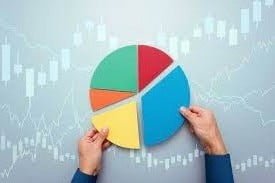Introduction:
In the world of financial markets, the term “simulation” is often used to refer to a practice that allows traders and investors to test their strategies and assess their performance in a risk-free environment. Simulation in trading involves the use of virtual platforms and realistic scenarios to mimic real-time market conditions. This article aims to provide a general understanding of what simulation entails in trading and how it benefits traders.
Understanding Simulation in Trading:
Simulation in trading involves the use of computerized models to replicate the behavior of financial markets. These models simulate the trading process and enable traders to execute virtual trades using historical or real-time data. Through simulation, traders can monitor their decision-making skills, strategy implementation, risk management techniques, and overall trading performance in a controlled and non-threatening environment.
Key Features and Benefits:
- Realistic Market Conditions: Simulations strive to recreate real market conditions, including price fluctuations, trading volumes, order books, and time constraints. This realistic environment helps traders gain practical experience and become familiar with various market interactions and dynamics.
- Risk-free Learning Experience: One significant advantage of simulations in trading is the ability to experiment and learn without the fear of losing real money. Traders can test new strategies, explore different trading styles, and evaluate potential risks and rewards without incurring any financial losses.
- Performance Evaluation: Simulations enable traders to assess their trading performance comprehensively. By tracking key performance indicators (KPIs) like profitability, trade execution speed, risk-adjusted returns, and portfolio management, traders can identify areas of improvement and fine-tune their strategies accordingly.
- Strategy Development and Backtesting: Simulations provide a platform for traders to develop and refine trading strategies. Traders can backtest their strategies against historical data to determine their viability and effectiveness. This process helps in identifying potential pitfalls and optimizing strategies for improved performance and risk management.
- Enhancing Decision-making Skills: Through simulations, traders can practice making informed decisions under different market scenarios. They can analyze and interpret market trends, monitor news events, assess technical indicators, and test their ability to react to changing market conditions swiftly. This practice helps traders enhance their decision-making skills and build confidence in their trading abilities.
Conclusion:
Simulation in trading plays a vital role in preparing traders for real-world market challenges. It provides a risk-free learning environment that fosters skill development, strategy refinement, and overall performance improvement. By leveraging simulations, traders can optimize their decision-making process, enhance their trading strategies, and ultimately increase their chances of success in the highly competitive domain of financial markets.

